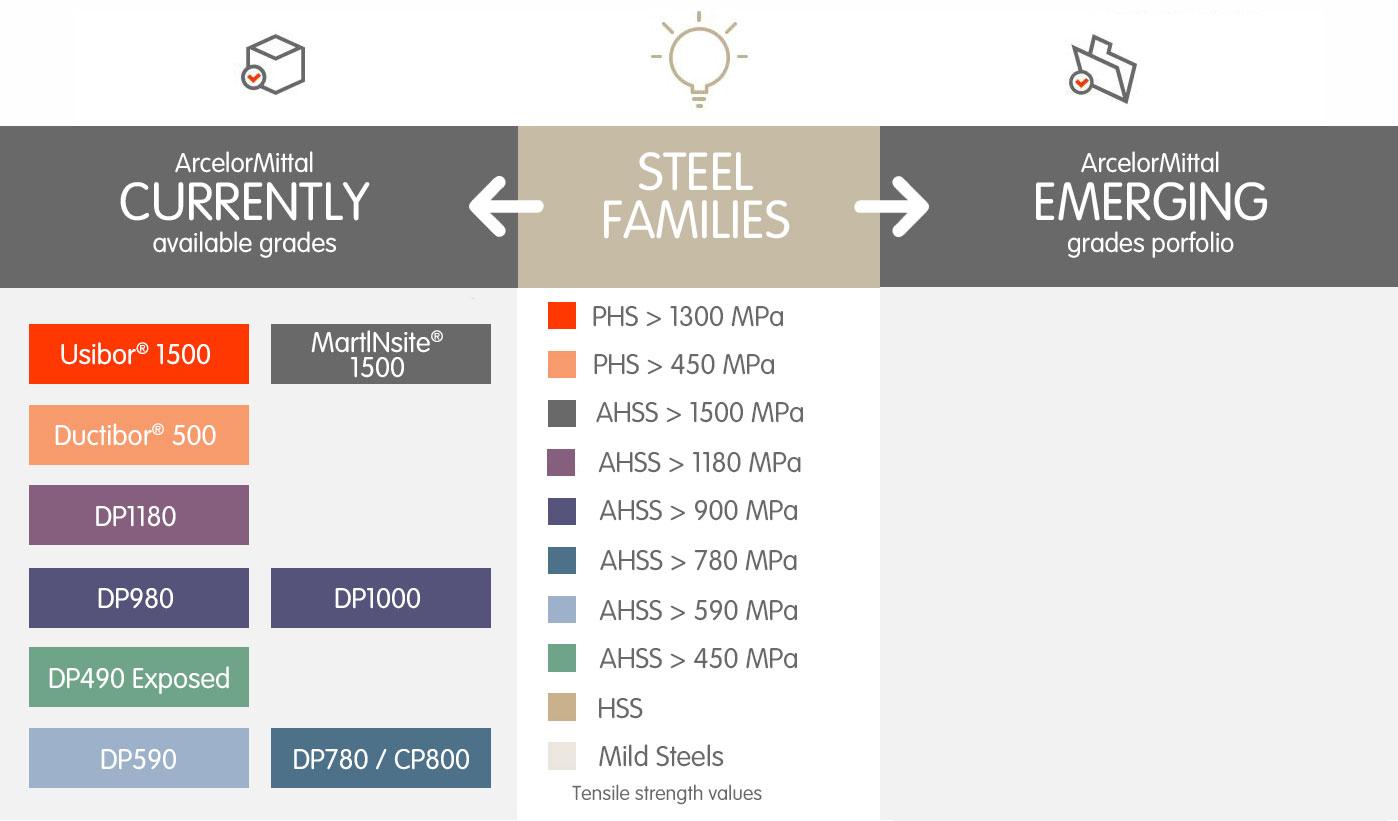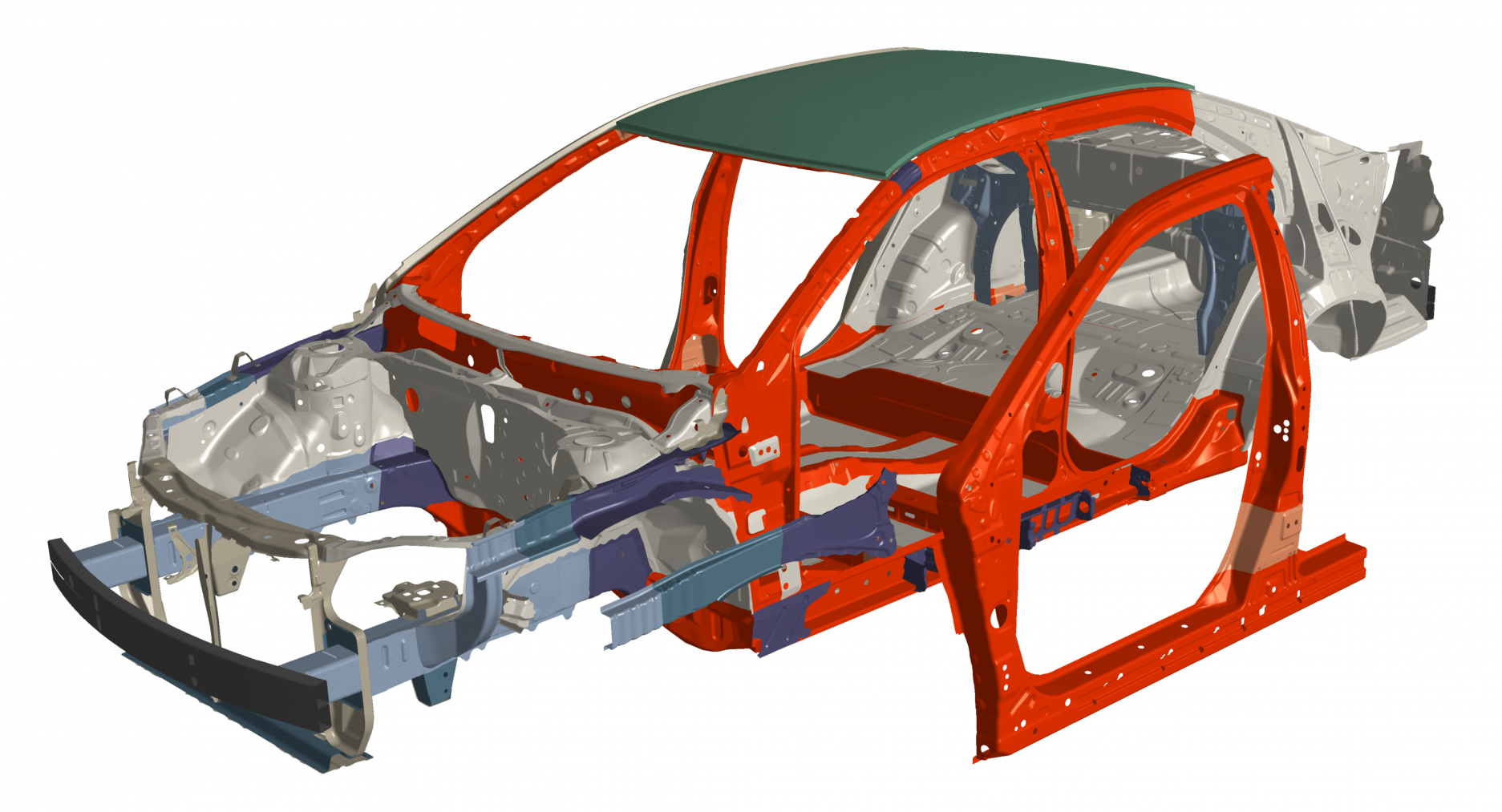 My space
My space
Laser welded blanks (LWB) give automotive engineers the chance to design lightweight parts which ensure the right steel in the right place for safety and performance. Creating LWBs with ArcelorMittal’s newest hot or cold stamping grades allows OEMs to achieve additional reductions in vehicle weight at an affordable cost, while increasing safety performance.
While laser welded parts have been around for several years, the evolution of grades suitable for LWBs is making them an even more attractive option than ever before. Some of the most recent innovations have included Usibor® 2000 and Ductibor® 1000 for hot stamping, and Fortiform® 1180 and Fortiform® 980 for cold stamping.

ArcelorMittal’s range of steels for LWBs includes emerging Usibor® and Ductibor®grades for hot stamping, and Fortiform® for cold stamping.
Since 2010, ArcelorMittal has developed a number of S-in motion® studies which show the lightweighting potential of its latest and emerging grades. LWBs are regularly evaluated as part of these studies.
For example, the S-in motion® study on mid-size sedan and SUV vehicles identified 23 LWB solutions using both first and second generation PHS. Using the lightest options, 78 kilograms of weight savings were identified.
Multiple solutions are developed for each part, giving OEMs material and design options which suit their vehicles and processes. Customers can then evaluate which is the best solution for the vehicle under development.

With the new-generation press hardenable steels, thickness of BIW parts can be significantly downgauged while still maintaining safety and performance.
One of the most interesting LWB applications has been for a one-piece door ring. This single door-ring part allows energy management in a range of scenarios while leading to lightweighting and improving the stiffness of the vehicle body. Weight savings of up to 25 percent are possible using hot stamped LWB technology.
The single door ring combines a number of side parts which were traditionally spot welded together. Manufacturing the door ring from one LWB creates a continuous load path for energy management in the structure. The laser welded seam allows the seamless transfer of energy from one part to the other during a crash event and helps to enhance body rigidity.
A range of load cases, including front-, side-, and pole-impact scenarios, can be managed much more efficiently using the single-piece LWB. These are some of the most challenging load cases to manage in vehicle design.
There are also many cost efficiencies with this approach. For example, only one stamping tool is required, and there is only one stamping operation to make the entire side structure. Post-assembly operations such as spot welding are eliminated and there is virtually no springback. Another major advantage is the improved geometric accuracy of the part, a key consideration in vehicle assembly.
The single LWB door ring is already appearing in production vehicles. In 2014, Honda unveiled the industry’s first hot-stamped, laser-welded door ring for the Honda Acura MDX. This innovation, developed together with ArcelorMittal, significantly lowered the weight of the door ring while bringing improvements to the vehicle’s safety performance.
In 2016, ArcelorMittal and Chrysler took LWB technology to the next level by refining the side structure of the 2017 Chrysler Pacifica. The new structure is the result of 36-months of R&D, 2,000 engineering hours, and approximately 300 design iterations. The result is the world’s first five-piece, hot-stamped laser-welded door ring combined with a hot stamped B-pillar. The new part brings significant advantages for Chrysler including weight reductions of 8.64 kg, reduced material costs, and a simplified manufacturing process. The Pacifica became the first vehicle in the minivan class to achieve an IIHS 2017 Top Safety Pick Plus award.

The single-piece hot stamped LWB door ring can be tailored for different levels of complexity to achieve different weight savings, while improving safety in many different crash scenarios.
The commercialisation of ArcelorMittal’s latest Usibor® and Ductibor® PHS grades for hot stamping, and Fortiform® grades for cold stamping gives OEMs new opportunities for lightweighting using LWBs. With their low cost compared to alternative materials and excellent safety performance, LWBs help ensure that steel will remain the material of choice for carmakers for the long-term.